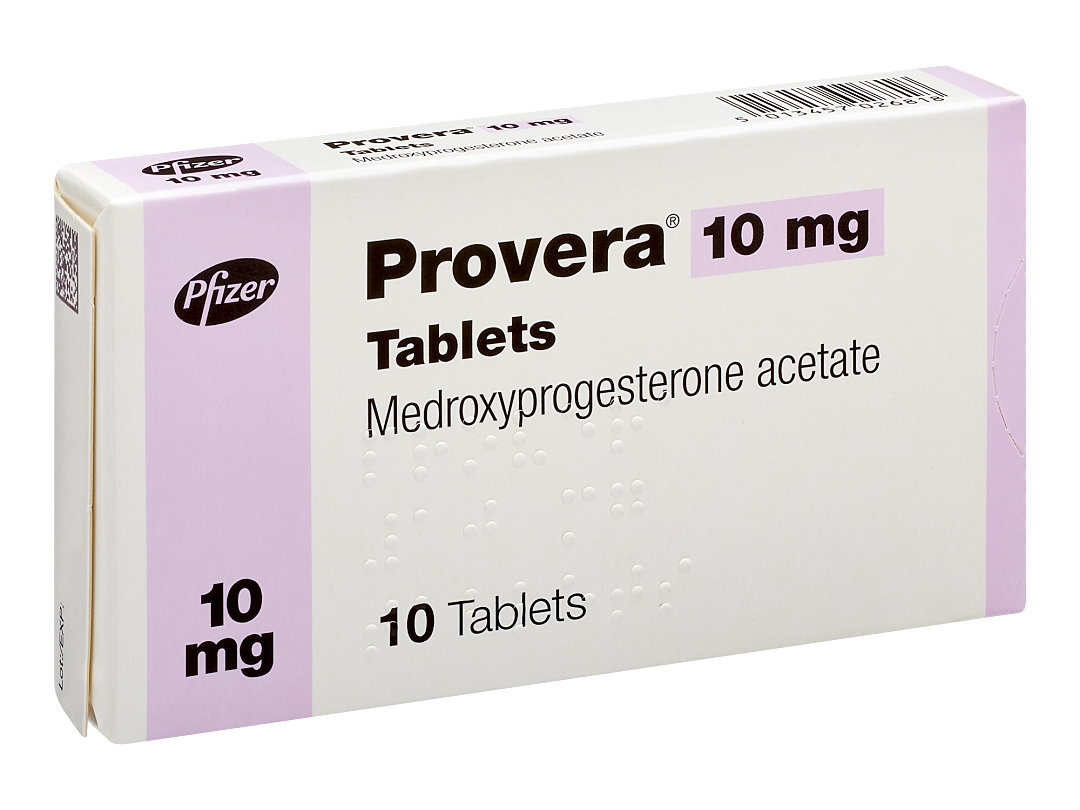Provera, containing medroxyprogesterone acetate, primarily treats abnormal uterine bleeding. This means it helps regulate irregular or excessively heavy menstrual periods. Doctors frequently prescribe it to manage this common gynecological issue.
Beyond irregular bleeding, Provera finds application in managing endometriosis. This condition involves the uterine lining growing outside the uterus, causing pain and heavy bleeding. Provera helps suppress the growth of this tissue, alleviating symptoms.
Another significant use involves premenstrual dysphoric disorder (PMDD), a severe form of PMS. For women experiencing debilitating mood swings and other symptoms, Provera can provide relief by regulating hormone levels.
Finally, Provera plays a role in certain types of hormone-related cancers. Consult your doctor to understand if it’s an appropriate treatment option in your specific circumstances. Remember, this medication requires a physician’s prescription; self-medicating is dangerous. Always follow your doctor’s instructions carefully.
- What is Provera Used to Treat?
- Abnormal Uterine Bleeding
- Causes of AUB
- How Provera Works
- Treatment Options Beyond Provera
- Important Considerations
- Managing AUB at Home
- Follow-up Appointments
- Endometriosis
- Symptoms and Diagnosis
- Treatment Options Beyond Provera
- Managing Endometriosis
- Amenorrhea
- Premenstrual Dysphoric Disorder (PMDD)
- Fibroid Tumors
- Contraceptive Uses (Limited)
What is Provera Used to Treat?
Provera, containing medroxyprogesterone acetate, treats several conditions related to hormonal imbalances in women. It primarily manages abnormal uterine bleeding, often stemming from hormonal fluctuations.
Beyond irregular bleeding, Provera finds application in managing endometriosis symptoms. This involves reducing painful periods and other associated discomfort.
Provera also plays a role in treating amenorrhea, the absence of menstrual periods, and managing premenopausal symptoms, such as hot flashes.
Additionally, it’s used as part of hormone therapy after menopause, though this use is becoming less common due to potential risks.
Remember, Provera is a prescription medication. Always discuss its use with your doctor to ensure it’s the right treatment for your specific needs and to understand potential side effects.
| Condition | How Provera Helps |
|---|---|
| Abnormal Uterine Bleeding | Regulates hormones, reducing bleeding. |
| Endometriosis | Reduces pain and other symptoms associated with the condition. |
| Amenorrhea | Induces menstrual bleeding. |
| Premenopausal Symptoms | Alleviates symptoms like hot flashes (though use is decreasing). |
Abnormal Uterine Bleeding
Provera can help manage abnormal uterine bleeding (AUB), a condition characterized by irregular or excessive menstrual bleeding. This means bleeding that’s heavier, longer, or more frequent than usual.
Causes of AUB
- Hormonal imbalances
- Fibroids (benign tumors in the uterus)
- Polyps (small growths in the uterine lining)
- Cancer (though less common)
- Changes during perimenopause or menopause
Understanding the cause is key to effective treatment. Your doctor will conduct a thorough examination and possibly order tests like an ultrasound or blood work to determine the underlying issue.
How Provera Works
Provera, a synthetic progestin, works by regulating the hormones involved in the menstrual cycle. This helps to stabilize bleeding and reduce its severity. It’s often prescribed for short-term management of AUB.
Treatment Options Beyond Provera
Treatment for AUB depends on the cause and severity. Other options include:
- Nonsteroidal anti-inflammatory drugs (NSAIDs) to reduce pain and bleeding
- Hormonal birth control pills to regulate the menstrual cycle
- Surgical procedures to remove fibroids or polyps
Important Considerations
Always consult your physician. They can accurately diagnose the cause of your AUB and recommend the most suitable treatment plan for your specific situation. Provera may not be appropriate for everyone, and potential side effects exist. Discuss these with your doctor before starting any medication.
Managing AUB at Home
- Maintain a healthy lifestyle: regular exercise, balanced diet
- Manage stress levels: stress can impact your hormonal balance
- Use appropriate sanitary products: manage heavy flow effectively
Follow-up Appointments
Regular check-ups are vital to monitor the effectiveness of the treatment and address any potential issues. Discuss a follow-up schedule with your doctor. Open communication with your healthcare provider is crucial for effective AUB management.
Endometriosis
Provera can help manage endometriosis symptoms, particularly heavy bleeding. Endometriosis is a condition where tissue similar to the uterine lining grows outside the uterus. This misplaced tissue responds to hormonal changes, causing pain and inflammation.
Symptoms and Diagnosis
Common symptoms include painful periods (dysmenorrhea), pelvic pain, heavy bleeding, and infertility. Diagnosis involves a pelvic exam, ultrasound, and sometimes laparoscopy–a minimally invasive surgical procedure to view and biopsy the tissue.
Treatment Options Beyond Provera
Besides Provera, treatment options include pain relievers like ibuprofen or naproxen, hormone therapy (like birth control pills or GnRH agonists), and surgery to remove endometrial implants. Lifestyle changes, such as regular exercise and a healthy diet, can also provide symptom relief.
Managing Endometriosis
Working closely with your gynecologist is key to finding the best treatment plan for you. Regular check-ups and open communication about your symptoms will help manage your condition effectively. Remember that treatment may involve a combination of approaches.
Amenorrhea
Provera can help treat amenorrhea, the absence of menstruation. This condition can stem from various factors, including hormonal imbalances, stress, excessive exercise, or underlying medical issues. Your doctor will determine the cause through a thorough examination, potentially including blood tests and imaging.
Provera’s role is to stimulate the withdrawal bleed, mimicking a period. This doesn’t cure the underlying cause, but confirms whether your ovaries are responding to hormonal stimulation. If the bleed occurs, it suggests your reproductive system functions adequately, but further investigation into the cause of amenorrhea is still needed. However, absence of a withdrawal bleed may signal a more serious problem requiring specialized medical attention.
Remember, Provera is a medication, and like all medications, it carries potential side effects. These can include weight changes, mood swings, and breast tenderness. Always discuss potential side effects and your medical history with your doctor before starting any treatment. They will tailor the treatment plan to your specific circumstances and health profile.
Addressing amenorrhea requires a personalized approach. Your doctor will work with you to find the root cause and develop a treatment strategy that best suits your individual needs. This may involve lifestyle adjustments, hormone therapy, or further investigation depending on the diagnosis.
Premenstrual Dysphoric Disorder (PMDD)
Provera can help manage PMDD symptoms. PMDD is a severe form of PMS, causing significant emotional and physical distress in the week before menstruation. Symptoms include intense mood swings, irritability, anxiety, depression, fatigue, and changes in appetite or sleep.
Diagnosis relies on tracking symptoms for at least two menstrual cycles using a symptom calendar. A healthcare professional will assess your symptoms against specific diagnostic criteria to rule out other conditions.
Treatment options vary. Provera, a progesterone medication, helps regulate hormones that contribute to PMDD. Other options include antidepressants, birth control pills, and lifestyle changes like stress management techniques and regular exercise. Your doctor will recommend the best approach for you.
Managing PMDD effectively involves working closely with your healthcare provider. Open communication and consistent symptom tracking are key to finding the right treatment plan. Remember to discuss any concerns or side effects you experience with your doctor.
Provera offers relief for many women with PMDD, but its use must be guided by a medical professional. Self-treating can be dangerous, so always seek medical advice for PMDD or any other health concern.
Fibroid Tumors
Provera can help manage heavy bleeding associated with uterine fibroids. Fibroids are benign tumors that grow in the uterus. They are very common, affecting many women.
Symptoms vary greatly, but heavy menstrual bleeding (menorrhagia) is a frequent complaint. Other possible symptoms include:
- Prolonged periods
- Pelvic pressure or pain
- Frequent urination
- Constipation
- Infertility (in some cases)
Diagnosis usually involves a pelvic exam and imaging tests like ultrasound. Treatment options depend on symptom severity and individual circumstances. Provera, a type of progestin, helps regulate the menstrual cycle and can reduce bleeding. However, it doesn’t shrink the fibroids themselves.
Other treatment options include:
- Myomectomy: Surgical removal of fibroids while preserving the uterus.
- Uterine Fibroid Embolization (UFE): A minimally invasive procedure that blocks blood supply to fibroids.
- Hysterectomy: Surgical removal of the uterus. This is typically a last resort.
- Gonadotropin-releasing hormone (GnRH) agonists: Medications that temporarily shut down ovarian function, reducing fibroid size and bleeding.
It’s crucial to discuss all options with your doctor to determine the best course of action for your specific situation. They can assess your symptoms, medical history, and preferences to create a personalized treatment plan.
Contraceptive Uses (Limited)
Provera, containing medroxyprogesterone acetate, offers limited contraceptive capabilities. It’s primarily used as a post-coital contraceptive in specific situations, like after a potential rape or contraceptive failure. However, it’s not a reliable method for ongoing birth control.
This medication works by altering the uterine lining, making implantation of a fertilized egg less likely. It’s crucial to understand this is not a replacement for standard contraceptive methods. Remember, Provera must be administered within a short timeframe following unprotected sex to be effective in this context; timing is critical.
The efficacy rate for post-coital use varies depending on several factors, including how soon it’s taken after intercourse. Consult your doctor for personalized guidance on the appropriate dosage and timing, and to discuss other contraception options.
Beyond post-coital use, Provera might be used temporarily to suppress ovulation as part of a larger fertility treatment plan, though this is not its primary role in contraception. Always consult a medical professional before using Provera for any contraceptive purpose.










